A Fair for the New Generations
3331 Arts Chiyoda is brewing a revolution in the Japanese art world. With 3331 Art Fair— Various Collectors’ Prizes, the junior high building-turned-art-complex is giving the Japanese art market a much-needed infusion of vitality by balancing the relationship between artists, galleries, and buyers. While Japan’s largest art fairs have been overshadowed by those of Asian neighbors in recent years, this event takes a fresh approach that focuses not just on selling works, but on building relationships between the artists and the buyers. Instead of relying on foreign collectors or a wealthy class of patrons, 3331 aims to make contemporary art ownership accessible to everyone. With many affordable works on offer and an environment that demystifies art buying, it makes for a process that’s more inviting to first-time collectors while celebrating the artists. The event even offers advice (upon request) on how to install and display specific works and showcases collectors’ stories of purchasing their first pieces.
The design of the fair is simple: promising emerging artists present works that can be bought by either the public or by one of several prominent collectors invited to the fair. To make the purchasing transparent, collectors’ purchases are listed publicly as “Collectors’ Prizes,” and in addition this year other visitors could vote for an Audience Prize. The 86 Japanese or Japan-focused artists chosen to participate in 2015 included relatively unknown creators and prestigious award-winners alike. Artists and their galleries set the prices to accommodate a range of budgets, with works selling for between 3,000 yen and a few hundred thousand yen during this year’s event. Spanning genres such as painting, sculpture, video, and installation, the art varied in style and subject but shared a more cutting-edge vibe than a standard art fair and more playfulness in ideas and execution. Here are some highlights:
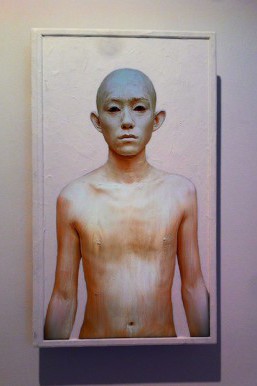
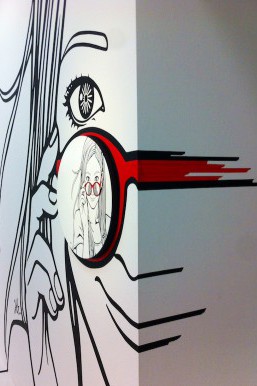
LEFT: The art unit Exonemo uses digital and analog media to explore the boundaries between the body and its perceptions when linked to technology.
RIGHT: This masking tape illustration by Hogalee can be reproduced in the buyer’s chosen location.
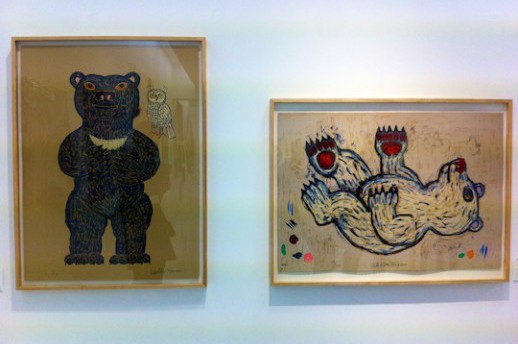
Atsuhiko Misawa presented prints of his celebrated “Animals” sculpture series.
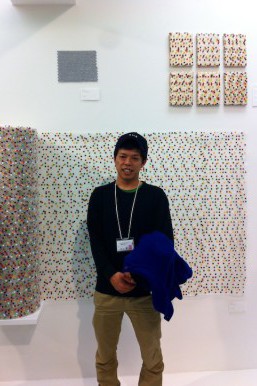
For this series, Satoshi Uchiyama (pictured above) chose bubble wrap as a medium because it allows him to work with both flat and three-dimensional surfaces.
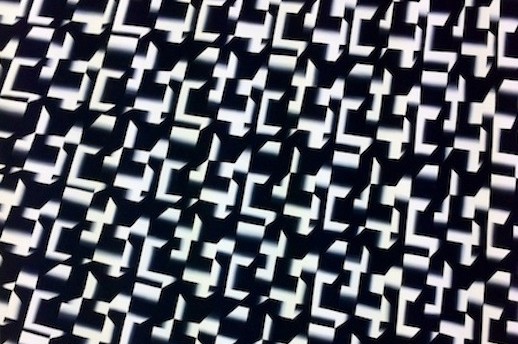
Walking into the room, it is clear that this art fair is different from most others. There are no booths, for one thing, so the space seems more like a gallery and the works seem more approachable and connected to each other. This open atmosphere made it easy for visitors and artists to talk freely.
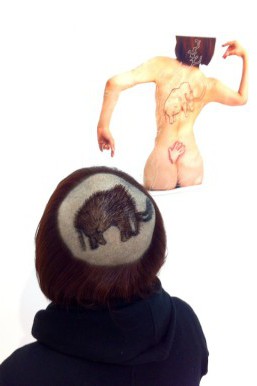
Hikaru Miyakawa (pictured above) showed off her head tattoo, an integral part of her series positing that body embellishments are humanity’s original means of artistry, dating back to cave paintings.
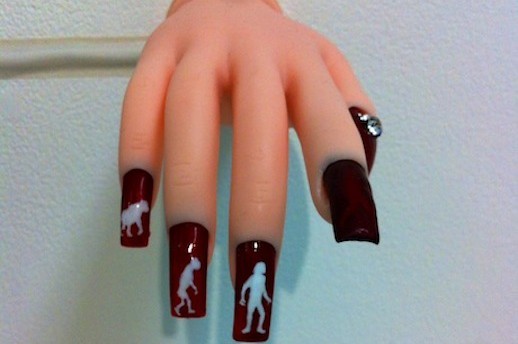
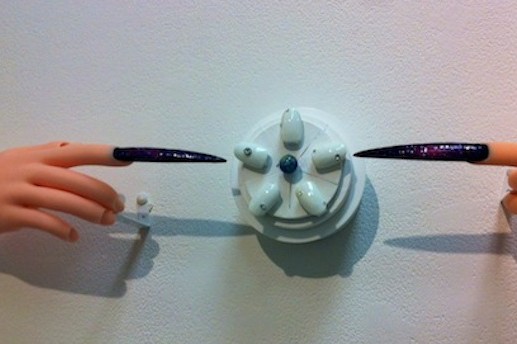
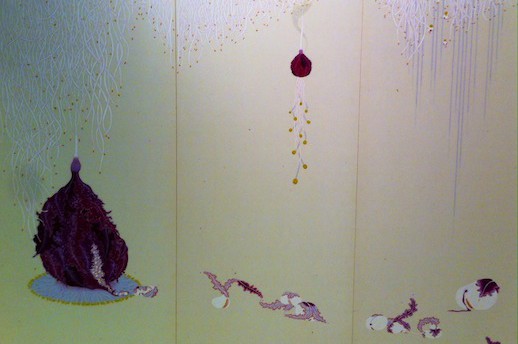
2015 Voca Exhibition participant Mariane is one of several artists featured in both the fair and a solo show at 3331 Arts Chiyoda’s upstairs galleries. Like Miyakawa, she also depicts themes of the body in her paintings combining human and plant motifs.
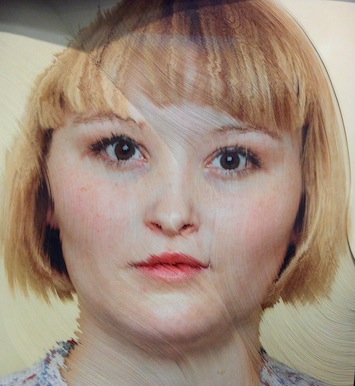
Stacked copies of the same photograph are carved into a sculpture taking the form of a book. Nerhol, an artist duo made up of Yoshihisa Tanaka and Ryuta Iida, create work that criticizes “the perennial cycle of consumption, creation, and obsolesce produced by contemporary economic activities,” according to the artists.
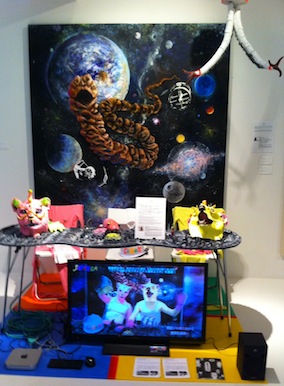
Japonica is a team of prankster artists awarded the 2014 Taro Okamoto Contemporary Art Award Special Prize for their wacky take on social satire. Their video installation and companion works imagine a new origin mythology for Japan.
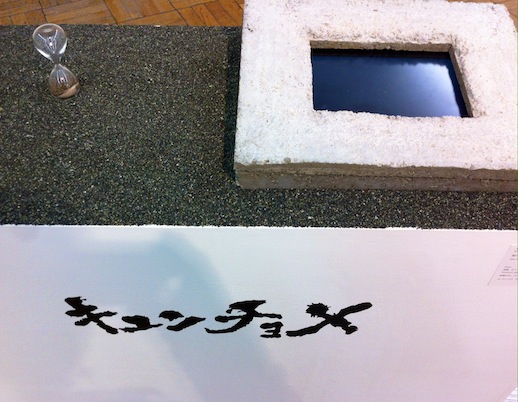
Another Taro Okamoto Prize winner, Kyun-chome, recorded video of harvesting kelp from the debris of tsunami-destroyed homes in ocean water contaminated by nuclear waste. The pair used the seaweed to make an hourglass.
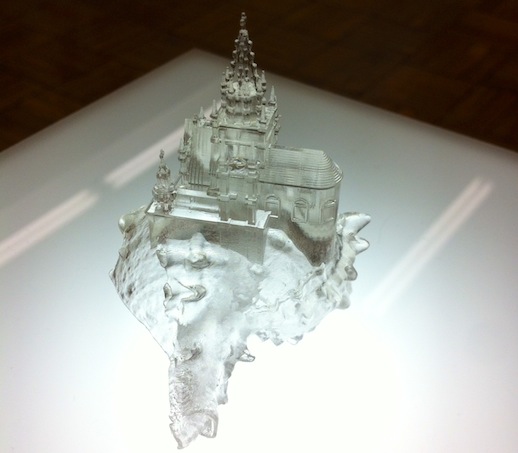
Aki Inomata creates sculptures representing cities around the world for hermit crabs to wear as shells, addressing themes of shelter, migration, and nationality. This sculpture replicates one of Japan’s numerous fake churches used as commercial wedding chapels. With it she asks, “Are we Japanese living in a mimicry of the Western world?”
This year’s 3331 Art Fair also featured a lineup of special events including talks, performances, and live painting. Speaking at the fair’s pre-opening event was Hiroko Ishinabe, the founder of the One Piece Club that encourages each member to buy at least one work of contemporary art per year. Ishinabe noted a sharp interest in collecting contemporary art in Japan over the past seven years, and urged artists to sustain and build on the momentum by communicating openly with art viewers and buyers.
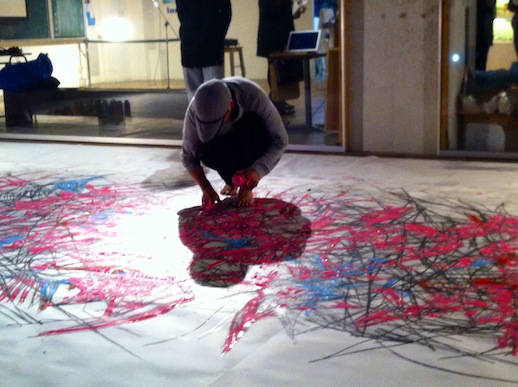
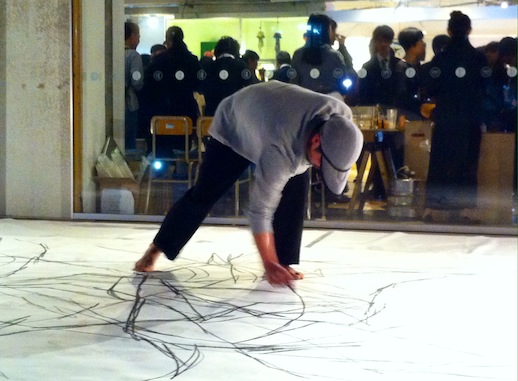
As Ishinabe spoke, Ryo Matsuoka, an artist represented in the fair and the upstairs solo exhibit “Paper and Paint,” worked on a live painting on 3331 Chiyoda’s outside patio. He paced across a sheet of paper several meters long, filling the page with jagged dashes of color and a vibrant, buzzing energy that resonated with the night.


